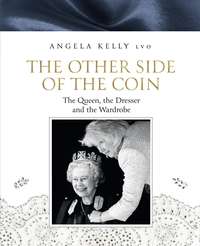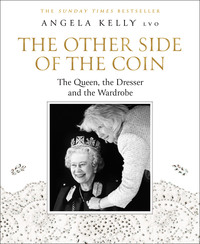
Полная версия
The Other Side of the Coin: The Queen, the Dresser and the Wardrobe
After I’d thanked them for their thoughtful gift, Her Majesty asked whom we expected next at the Residence. I replied that the information was confidential, and The Duke asked, slightly incredulous: ‘Surely you can tell Her Majesty The Queen?’ Again, I explained that I really could not disclose the information as I had signed the Official Secrets Act, now known as Confidentiality Agreements. I had taken the confidentiality surrounding their visit in a similar way – even carrying a bunch of flowers whenever I left the Residence to trick the surrounding media into thinking I was a florist and so would be unable to provide any intelligence on the high-profile guests inside. In light of this exchange, I offered the photograph and needle case back to Her Majesty and The Duke – I wasn’t sure if it was appropriate to keep them since I’d refused them the information they’d asked for. The Queen simply told me to keep it. I thanked her and His Royal Highness again, and said to Her Majesty The Queen, ‘I will remember this for the rest of my life.’
And the Queen replied, ‘Angela, so will I.’
A few weeks after the Royal visit to the Ambassador’s Residence, I was surprised to receive a phone call out of the blue from Peggy, who asked how I was. I assumed she was just being kind as I’d mentioned to her that I was hoping to come back to England later in the year to start a new chapter of my life after the recent breakdown of my marriage. It was lovely to chat to her and she said she would call me again before I left Berlin.
It was just a couple of days later when I next heard from Peggy. She said that Her Majesty had requested she get in touch to ask would I consider coming to work at Buckingham Palace? To say that I was shocked would be an understatement. I told Peggy I was still making arrangements to return to England but that I would consider the offer of a position carefully.
Several weeks later, when I was finally settled back in Sheffield with my family, Peggy rang to ask if I had an answer for her about applying for the Assistant Dresser role. I discussed the prospect at length with my family to make sure they were happy with my entering into this commitment, because it would be almost like a marriage and would therefore affect all of our lives. But there really was only one answer to give: a very enthusiastic yes from us all.
I could give one half of myself to my children, and the other half to the life I was about to enter.

MY LIFE
A couple of months after I had accepted Peggy’s invitation to interview for the position of Assistant Dresser, I found myself en route to Buckingham Palace to meet with Lady Susan Hussey and the Honourable Miss Mary Morrison, two of The Queen’s Ladies-in-Waiting. As with any interview, I had spent quite a lot of time thinking about what to wear. I was certain this interview was for these two ladies to look me over and check me out, and that everyone in the Palace would be an intimidating, impeccably dressed aristocrat. When I first received the letter inviting me to Buckingham Palace for the interview I went into panic mode. Those famous words of ‘what on earth will I wear?’ came to mind – I already had lovely clothes, but I thought that a more conservative outfit was needed. So I made the rather rash decision to sell my washing machine so that I could afford an appropriately smart outfit. I chose a crisp cream blouse with navy spots and a long skirt, and wore a string of pearls. Normally I wear dresses to my knees, but for the interview I thought a long skirt would be more appropriate. I did struggle to walk and I looked like a good take on Miss Marple, with my skirt wrapped around my legs. I arrived at the Privy Purse Door, which is the main entrance at the front of Buckingham Palace, at 11.30am and was welcomed in. Trembling with nerves, I was taken to the Ladies-in-Waiting sitting room.
As I waited, I couldn’t help but reflect on how I had ended up there: a divorced single mother from humble beginnings in Liverpool was on her way to interview for a position working with Her Majesty The Queen.
When I think about my early childhood, most of my memories seem to be anchored in and around the back room of our house. I was born in a small street in Liverpool, facing Stanley Park, between two famous football grounds: Everton and Liverpool. We lived in a two-up-two-down terraced house, and it was a very happy home. My mother sewed and my father was in the Merchant Navy.
The back room of our house was a hive of activity; a place for chatting, listening to the radio, eating, and, crucially, it was also frequently transformed into a sewing room. My mother, Teresa, was a very smart, elegant, and glamorous lady, although I remember her blushing and shying away from compliments. She was not shy when it came to the sewing machine, though, and she had a raw talent and natural flair for clothes design. I’m sure her skills were recognised by my maternal grandmother, who taught her the art of dressmaking when she was still very young. When she grew up, my mum joined the army’s Auxiliary Territorial Service. Funnily enough, then as the Princess Elizabeth, The Queen also joined the Auxiliary Territorial Service in 1945, and was the first female member of the Royal Family to join the Armed Services as a full-time active member. My mum worked with the Service until she fell in love with my father, Thomas, and left to marry him. They had two sons, my brothers Tommy and Tony, before I came along, then another two sons, John and Terry, and a second daughter, my sister Donna Maria. With so many young children to care for, my dad left the Merchant Navy and took up a job as a crane driver on the Liverpool docks so that he could be closer to home.
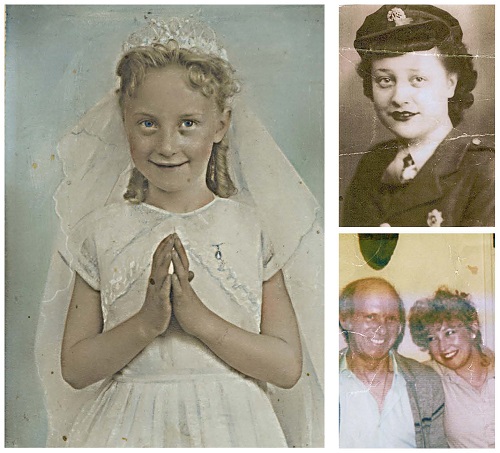
Clockwise: My first Holy Communion, age 7; my mum, Teresa, in the Auxillary Territorial Service; me and my dad at home in Liverpool.
My father was good-looking, quiet, and a gentleman. He was caring, loved, and respected by his family and all who knew him. When we were little, he was always tricking us. Perhaps he would shout, ‘Would you like a Quality Street?’ And we’d all come running, yelling, ‘Yes!’ And he would be standing in front of the television, and a Quality Street advert would be on, and he’d say, ‘Ah, you missed it.’ But every Friday, when he collected his wages, he’d go to the shop to buy the Liverpool Echo and a Mars Bar each for everyone.
We did not have much in the way of material possessions when we were growing up, but the house was filled with love, laughter, and kindness, and my mum insisted that our family take pride in everything we did. She was excellent at teaching by example and took meticulous care of every piece of clothing she created, which included my school uniform skirt and grey bib. She was endlessly generous with her time, and whenever the back room was not being used to entertain visitors, it became a fitting room, as well as a sewing room, for all those who came to her for new outfits. From wedding and bridesmaids’ dresses – beautifully crisp gowns, perfectly cut and adorned with little rosebuds – to school uniforms to help out the children in the neighbourhood, nothing was too challenging, and I vividly remember watching her work on that well-oiled Singer sewing machine. In fact, aged eight, maintaining that precious machine was my first task as an assistant dressmaker. I learned how to strip it down before cleaning it thoroughly and oiling certain components that were likely to stick. I would also check the rubber belt religiously, making sure it was not wearing out, and grease the treadle to make sure it moved up and down easily. When I had mastered all of this, I was finally shown how to load the shuttle, place it in the machine, and thread the needle.
Having perfected that important task, I was soon being shown how to cross-stitch for embroidering napkins, how to sew hems by hand and make elasticated waists – all crucial skills that still come in handy today. My mum was a thrifty woman (which I know Her Majesty would appreciate) and showed me how to make carpet rugs from old coats. We would cut the coats into strips, then double them and use an old peg to push the strips through the rug’s hessian backing to form a loop. However, it was when my mum was measuring her customers that I would pay close attention. I was fascinated to see how accurately she used her tape measure, which I still have to this day, and how confidently she cut and joined her patterns.
Not only did my mum have an extraordinary talent for dressmaking, she was generous when family and neighbours were in difficulty, especially when someone had passed away. I remember her visiting other people’s houses, and helping make their front room look beautiful for the family to mourn their loved one. She would take several white sheets with her and quickly get to work; I would watch her pleat the sheets and use small nails to keep them in place on the walls to make the room into a sort of chapel of rest into which the coffin would be brought. I also recall watching my mother lay out the body when a family member passed away. She was so gentle and caring, and it seemed such a natural thing to do, and it helped to ease the pain of the family and other mourners.
I wanted to be just like her, so it’s not surprising that my first paid job was in a sewing factory at the age of fifteen, working on the buttonhole machine. A few years later, when I got married and had children, I would make outfits for my family, but it was only when I started working with Her Majesty that I truly understood how indebted I am to the influence, knowledge, and guidance of my mum in those humble beginnings.

Me and Nettie at Windsor Castle before Royal Ascot in 2000.
Nettie
I value so many people in my life, whether they be close or acquaintances. Nevertheless, they are important to me. Throughout my time of twenty-five years working for the Royal Household, Annette Wilkin, also known as Nettie, was my true friend from day one when I first started at Windsor Castle.
Nettie was The Queen’s Housekeeper of Windsor Castle for over forty years. During Nettie’s time as Housekeeper, The Queen gifted her with a corgi pup called Larch, who became Nettie’s most loyal companion. After she retired as Housekeeper, Nettie came to work on the Dressers’ Floor the very next day. For the last five years of her life, Nettie worked for The Queen archiving and photographing The Queen Mother’s wardrobe.
I wish my friend was here today so that she could share with me the ending of this book. Sadly, Nettie passed away in May 2019. I was with her throughout her illness as well as being a support to her loving brother, Andre, who was always there for her.
It was an honour to care for Nettie during this difficult time, although she still had her wicked sense of humour about her. Even when she was first rushed into hospital, her humour was there. I was with Nettie when the nursing sister was asking for her name. Annette was having a hard time breathing, so I answered the question by saying, ‘Annette Wilkin’. It took all that Nettie had to say, ‘No! It’s Gwendoline Annette Wilkin.’ I almost fell out of the chair. I was shocked! For twenty-five years I had been calling her Annette or Nettie. So, Nettie had the last laugh.
When Nettie passed away I felt as though my mother was with me, keeping me calm and focused, as I helped prepare Annette’s body to be laid out. I gave her a big hug and kiss. I’ll never forget my best buddy. I miss you my friend.

Nettie and her corgi, Larch.
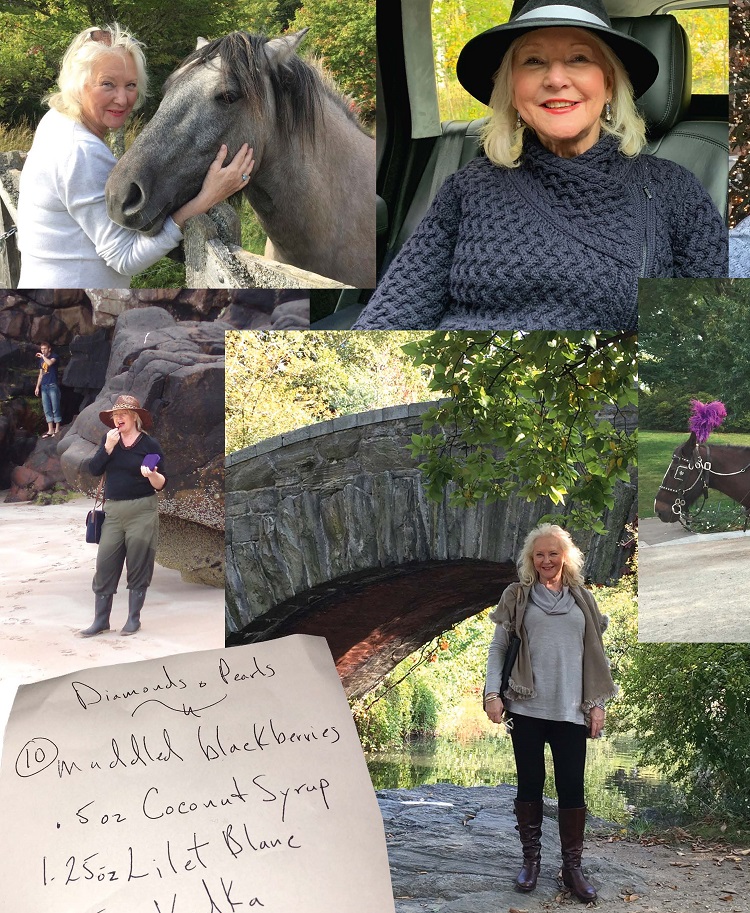
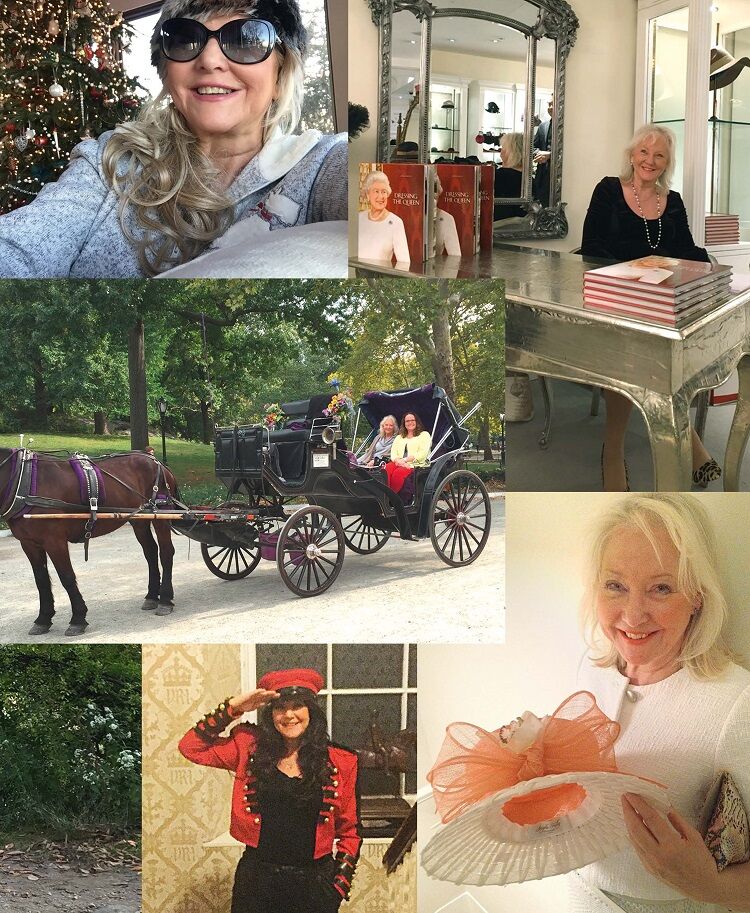

The gates of Buckingham Palace.
MISS KELLY
Dedicated to Miss Peggy Hoath – who was my mentor and taught me to reach for the highest of standards.
The interview at Buckingham Palace that day went well, and I felt confident in my new outfit. Lady Susan Hussey and Miss Morrison seemed satisfied that I was the right person for the job. I would be reporting to Miss Peggy Hoath. After a lovely chat I was taken along the red-carpeted corridor to The Queen’s private rooms, where I was to meet Her Majesty once again. This was where my life changed immediately. Obviously I cannot reveal the conversation, but I can say that it was lovely to see her again.
With all the arrangements made, I was soon walking through the gates of Buckingham Palace again, suitcase in hand, ready to start my new life.
My first day at the Palace was 31 March 1994, and I learned my first important lesson about life with Her Majesty: be prepared for anything. I was taken upstairs to the Dressers’ Floor by the Footman who was kindly helping me with my suitcases. I was going to start unpacking, but Peggy had other plans. She was waiting for me on the corridor, took one look at the Footman and another at my suitcases and told him to put them with the rest of the luggage. Peggy said, ‘Angela, don’t get comfortable. We’re off to Windsor for a month. There, I’ll introduce you to the ironing board!’ And I was! As soon as we arrived, Peggy said, ‘Ironing board, meet your new owner!’
After settling into my new job as an Assistant Dresser, my first task was to acquaint myself with Her Majesty’s wardrobe. Each piece was exquisitely made with such close attention to detail. I also discovered an abundance of material – beautiful silks and chiffons that had been presented to Her Majesty as gifts and stored away safely for future use.
Before long, I started to receive unwanted questions about my marital status from other members of the Royal Household. My predecessors had all been known as ‘Miss’ and were typically unmarried women. Although I was divorced, I was still known as Mrs Kelly. Feeling vulnerable and scrutinised, I decided to seek advice from The Queen. We had become more familiar with each other over the months and I felt comfortable in approaching her, not just because her guidance on the delicate matter would be the most authoritative but also because we had quickly established a rapport. So, I went to see The Queen and explained that I had been receiving prying comments because of my married title, which I had kept as an acknowledgement of my past relationship. Her Majesty advised that if I was known as Mrs Kelly, I should be prepared for questions about where my husband was, whether he minded me travelling and working away from home. It was time to look to the future and, on reflection, I realised that my role with Her Majesty was my new priority. From then on, I would be known as Miss Kelly.

With Miss Peggy Hoath on Britannia during the VE Celebrations in 1995.
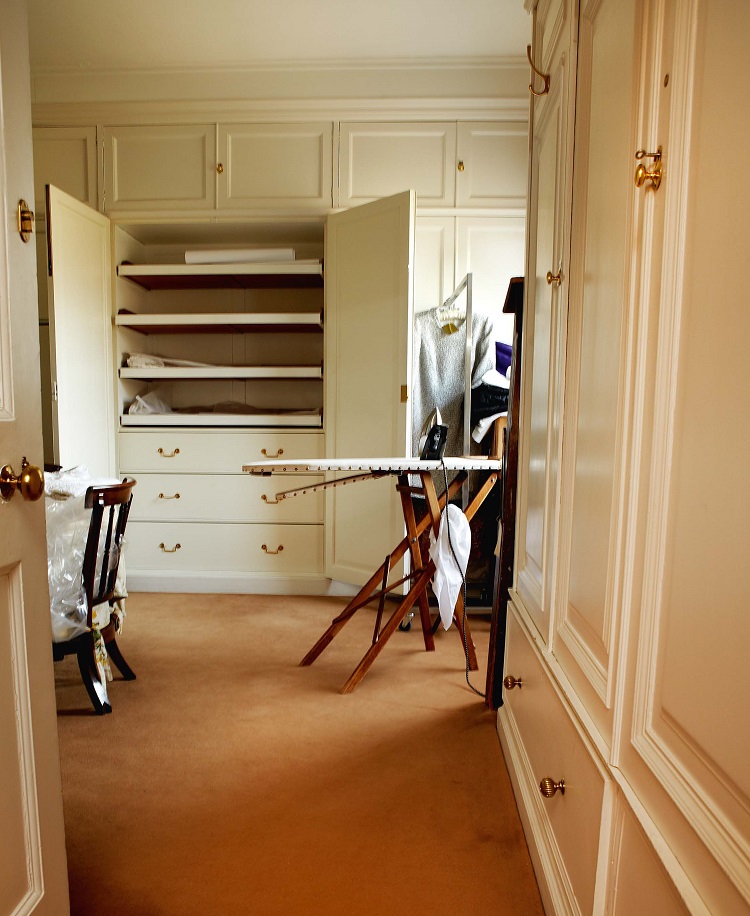
Now, let me introduce you to the ironing board, dear reader! Taken in the workroom at Buckingham Palace.

EDUCATING
ANGELA
In those early years at Buckingham Palace, I remember feeling very aware that some people might look down on me. I was, after all, from Liverpool and had a Scouse accent, not to mention that I was divorced with three children, and possibly not the ideal candidate to be working for The Queen. Even though I knew Her Majesty had particularly requested me after her visit to the British Ambassador’s Residence in Berlin, I thought other people might not understand why I was chosen: they might think I did not belong, and I wanted to be able to hold my own.
I’ve always wanted to speak nicely. I’m not sure I can say why. It’s not because I want to improve myself, just that I’ve always admired people who speak clearly. I don’t have a strong Liverpudlian accent, but it is there. I had wanted elocution lessons since I was eight years old, and I remember asking the Ambassador in Berlin whether I could take them. He offered me a pay rise and a promotion instead, but I refused as I didn’t want money all I wanted was to feel more at ease with how I presented myself to others – especially now among members of the Royal Household.
Needless to say, when I first started working with The Queen, I became even more aware of how I sounded. Listening to and speaking with Her Majesty, I would think, how wonderful to be able to speak so nicely, and after a few months of working with her, I plucked up the courage to ask if she knew anyone who might give me the elocution lessons I’d wanted for so long. The look on The Queen’s face was a picture. She simply asked, ‘Why?’ After I had explained, she said that it was not necessary and that she’d heard about my plan – the Ambassador had told her. I asked again and again, but she still refused. After much back and forth, Her Majesty eventually told me to go upstairs and talk to the Duchess of Grafton about it.
I ran up straight away, and found the Duchess waiting for me in the corridor. ‘Your Grace, I was wondering if you could put me in contact with anyone you know who could give me elocution lessons,’ I said.
The Duchess started laughing and I realised The Queen had called her in the time it had taken me to run up the stairs. ‘Look, Angela,’ she said, ‘if you speak slowly, it means you speak clearly. Just keep The Queen laughing – that’s all I ask of you.’ But that still wasn’t enough for me.
Later that day, I went back to see The Queen and mentioned that I’d spoken to the Duchess. ‘Oh, and what did she say?’ she asked. I repeated the advice I’d been given and Her Majesty seemed content. ‘Well, there you go,’ she said.
‘But that’s not an elocution lesson,’ I responded, then told Her Majesty my new idea: ‘You can give me elocution lessons! You can tell me what I say that’s correct and what I say that isn’t.’
The Queen could probably sense that I wasn’t going to give up, so she instructed me to say one word: ‘furious’. ‘Fyer-ri-ous,’ I responded.
‘No, fee-or-ree-ous,’ said Her Majesty, in perfect received pronunciation. After several more attempts, I finally cracked it and Her Majesty exclaimed, ‘Yes!’ and her finger went up in the air, followed shortly by, ‘Not sick as a parrot’. And that was it – my one and only elocution lesson, and from The Queen herself. From then on, I listened and tried my best to speak properly – even adding an aitch to words where it didn’t exist – but in the end I gave up: it was just too much effort. Ever since I’ve stuck to being myself, a girl from Liverpool and a proud Liverpudlian, too.

In The Splash with the dogs in Windsor Home Park in 1998.

LET ME TAKE
YOU AMONG THE
NIGHT STARS
In August 1994, four months after I had started working for The Queen, it was time for my first trip to Balmoral. Needless to say, I was very excited whenever one of these ‘firsts’ came around: my first visit to Windsor, my first trip on the Royal Train, my first Trooping the Colour. But I was particularly looking forward to seeing Balmoral Castle, where the Royal Family take their holiday each year. I was intrigued to see whether Her Majesty would have time to relax – to me, it seemed that she never stopped working.
On our first night, I remember gazing up at the night sky and noticing how brightly the stars shone out from the darkness. I’d always loved star-gazing and I find it a very calming experience. I vividly recall thinking how lucky I was to be standing in the majestic grounds of that historic building. A few days later, I relayed this to Her Majesty, with whom I now felt quite comfortable to enjoy some casual chat, and told her how much I loved gazing at the stars. It turned out that The Queen shared this passion and we looked out of the window into the darkness together. She pointed out the various constellations – the Plough, Ursa Major and Cassiopeia – and I mentioned that I had brought a telescope with me, a present from my family for my fortieth birthday. Her Majesty suggested that as it was a very clear, cold night, I should wrap up, go outside, and stand in front of the Castle shortly before midnight for the best view. I pointed out that the police probably wouldn’t appreciate me setting off all the alarms in the middle of the night, so instead, I asked if I could take a car to drive up to the Glenshee – one of the Highlands’ highest peaks. The Queen thought I was crazy and was reluctant to let me drive there alone, so she asked one of her duty protection officers to escort me.
Equipped with my telescope, its stand, binoculars, and a flask of coffee, my slightly begrudging escort and I made our way into the night. On top of Glenshee, the view was breathtaking. With the headlights turned off and the protection officer freezing in the car, I started scanning the sky and admiring the stars and constellations. It was the very first time I ever saw the Milky Way and I remember feeling quite emotional. Eventually I was persuaded by the officer to return to the Castle, but I had my head through the sun roof throughout the journey back, wielding my binoculars, reluctant to say goodbye to the stars. The next morning, I was full of excitement. I rushed up to Her Majesty and could not stop talking about how wonderful the experience had been. She must have thought, thank goodness it will be a while before she does that again. But every time I return to Balmoral, before I go to sleep, I open my bedroom window and gaze at the sky for several minutes. It always reminds me of that conversation with Her Majesty when I discovered a shared passion and the fact that, because of her thoughtful gesture, I saw the Milky Way for the first time.

Taking a walk in Balmoral grounds in 1998 – note the high heels!
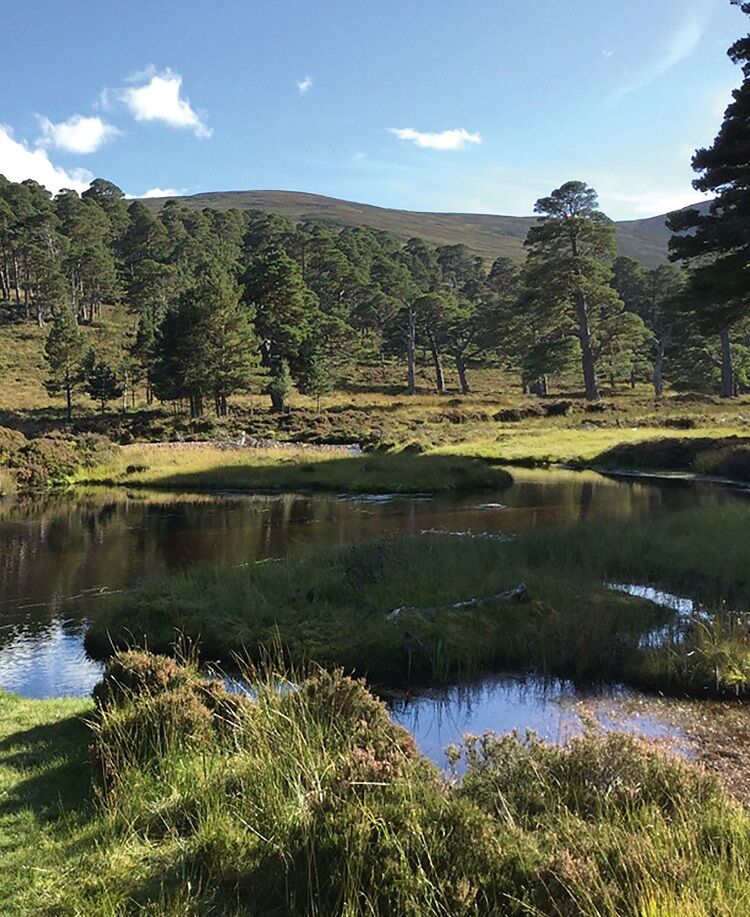
Beauty within the castle grounds.

The Queen at a State Banquet in 2011.
LEADING LADIES
As I began to settle into life in the Palace, I knew it was important to start standing my ground and fighting my corner. When I was asked to do something, I did it efficiently and thoroughly, but I soon became aware that I was also ruffling feathers.
Back then, the Royal Household was very male dominated. It had long been a place where traditions were upheld and routines were followed. On one occasion, I remember being told that only after twelve years as a staff member would I be allowed to have an opinion. Needless to say, I was not happy with this – I would only ever act in Her Majesty’s best interests and yet I often felt patronised and belittled.




